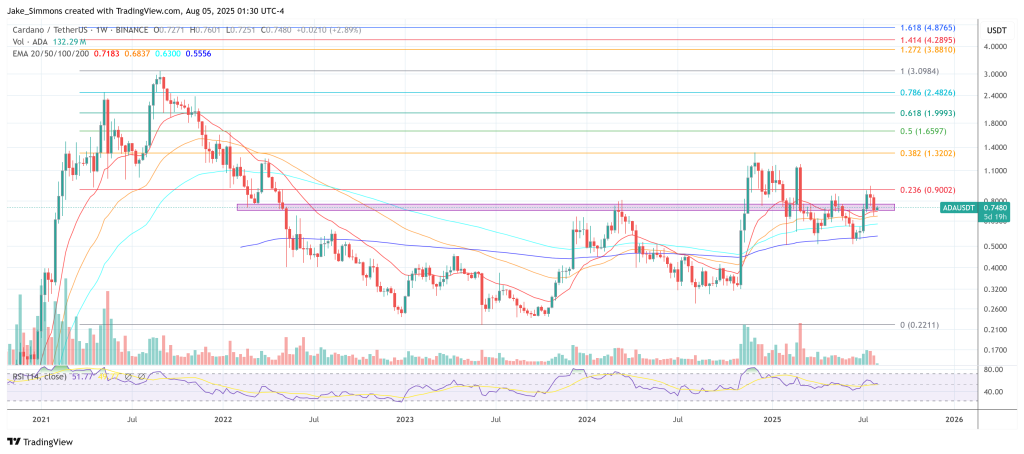This CIP Is ‘Massive’ For Cardano DApps: Anastasia Labs CEO
A still-unnumbered “Account Enhancement” Cardano Improvement Proposal (CIP) has ignited an unusually broad wave of enthusiasm inside the ecosystem after Anastasia Labs chief executive Phillip Disarro framed it as a breakthrough for decentralized-application design.
Why This CIP Could Be ‘Massive’ For Cardano
“This CIP is massive for expanding Cardano’s dApp ecosystem. Out of the gate, it makes implementing onchain dApp governance systems, a task that is extremely difficult now, completely trivial. If you are a developer in the ecosystem, please give this CIP a read,” Disarro told his followers on X late Monday.
Less than six hours later Cardano founder Charles Hoskinson amplified the call for scrutiny, posting “Let’s get this reviewed!”
According to the README preview visible on GitHub, the proposal adds native-asset deposit support to Cardano reward-style accounts. In practical terms the change would allow transaction outputs that lock only non-ADA tokens as deposits, let smart contracts pay sub-ADA “micro-fees” by streaming fractions of a token into the recipient’s reward address, and permit the Cardano Treasury to hold diversified native-asset balances instead of ADA alone.
By shifting deposit accounting away from the UTxO layer and into the reward-account mechanism, the draft sidesteps a design choice that has long irritated dApp teams: today every token-carrying output must include at least 1 ADA to protect the ledger against spam and bloat, an overhead that makes micro-transactions economically impossible.
Most Cardano DeFi protocols treat their governance or fee tokens as first-class “native assets,” yet are forced to charge users ADA to cover both minimum-value and network-fee requirements. The Account Enhancement CIP proposes a path to issue fees directly in protocol tokens without forcing users to top-up ADA balances, build lightweight, on-chain voting contracts because deposits can be collected and refunded in governance tokens rather than in ADA, and simplify Treasury accounting for the upcoming Voltaire governance era, whose blueprint is sketched in CIP-1694.
Next Steps In The Process
The draft has not yet been assigned an official number. To progress it must clear the public review cycle defined in CIP-1, during which a volunteer editor triages comments before the Cardano Foundation’s CIP editors decide whether to merge, request revisions or reject the proposal outright.
If adopted, the change would be delivered in a future protocol update; no hard-fork date is yet on the table. Still, developers who have reviewed the text say the proposal’s scope is “surgically narrow but strategically huge,” because it attacks a single bottleneck that has kept Cardano dApps from offering the sub-cent user experience common on account-based chains. Whether that promise survives the review gauntlet now depends on how quickly the community can validate the design — exactly the scrutiny Hoskinson called for overnight.
At press time, ADA traded at $0.748.

Featured image created with DALL.E, chart from TradingView.com

Editorial Process for bitcoinist is centered on delivering thoroughly researched, accurate, and unbiased content. We uphold strict sourcing standards, and each page undergoes diligent review by our team of top technology experts and seasoned editors. This process ensures the integrity, relevance, and value of our content for our readers.